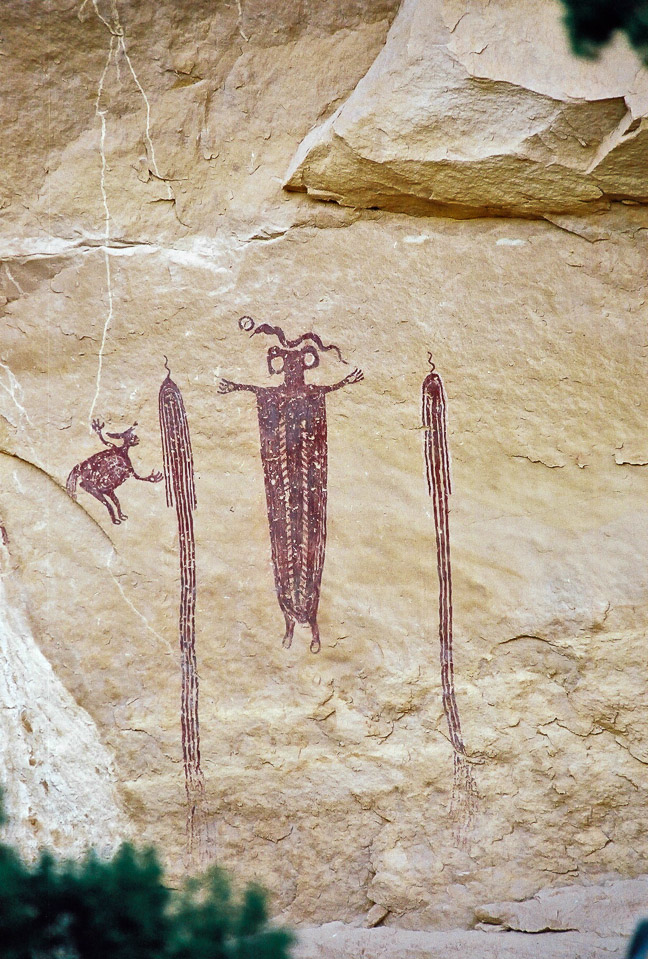


Several of these traditions persist into the post-contact, historic period, based on depictions of horses and other Euroamerican introductions, even including automobiles. Of these, the Dinwoody tradition is the most exuberant in its portrayals of anthropomorphs of bizarre forms and shapes, with many attributes of spirit beings, which the authors link to the spirit beings encountered by Northern Shoshone shamans on their journey to the spirit world. The other traditions, linked in varying degrees to historic Indian communities, include the Columbia Plateau Tradition, Dinwoody Tradition, the En Toto Pecked Tradition, the Pecked Abstract Tradition, the Foothills Abstract Tradition, the Hoofprint Tradition, the Ceremonial Tradition, the Biographic Tradition, and the Vertical Series Tradition. One of these, the Early Hunter Tradition, is linked to the Archaic Period, and feature detailed communal big game hunting scenes and the authors make a strong case for its use in sympathetic magic rituals. Each tradition is characterized as to the history of research, motifs and compositional arrangements, dating and chronology, distribution and regional relationships, cultural affiliations, and interpretations. Most of the book is devoted to a survey of ten rock art traditions encountered in the region. The discussion of neurophysiological studies and entopictoc phenomena is especially intriguing, linking a variety of rock art forms such as wavy lines and starbursts to the phosphenes or flashes of light and color "seen" in the brain during altered states of consciousness, such as those most likely experienced by shamans and individuals undergoing vision quests. A chapter on interpretation of rock art reviews contributions from stylistic and descriptive studies, semiotics, and analogy and iconography. Chronological placement of different rock art traditions later in the book are characterized by an informed understanding of the potential advantages and problems with the techniques used. The discussion of potentials and problems of cation ratio (CR) dating is especially good. Introduction and Background, includes a very thorough assessment of different techniques that have been used to date rock art. It covers the natural and archeological history of the region, explains rock art forms, techniques, styles, terminology and dating, and offers interpretations of images and compositions. It follows up Keyser¹s thorough study, Indian Rock Art of the Columbia Plateau, to present a detailed survey of the origins, diversity and beauty of Plains rock art. With that understanding, I can recommend this book most highly. Although the book is titled Plains Indian Rock Art, the coverage is limited to rock art of the northeastern Plains-primarily Wyoming, Montana, the Dakotas, Alberta and Saskatchewan.


 0 kommentar(er)
0 kommentar(er)
